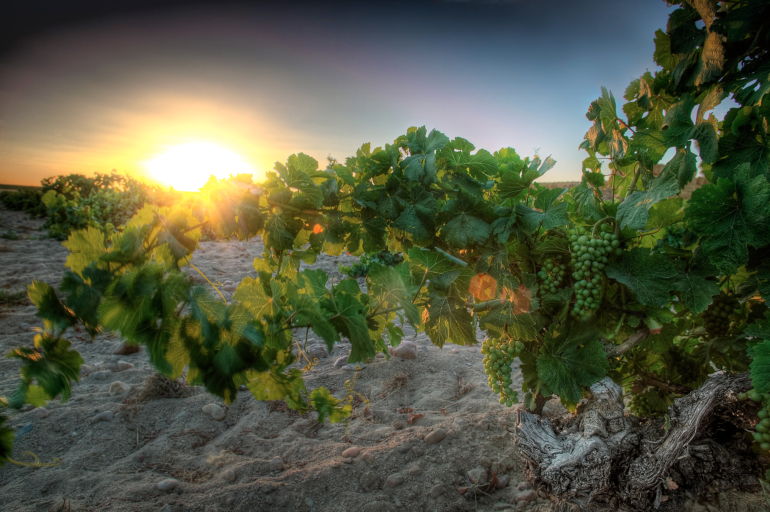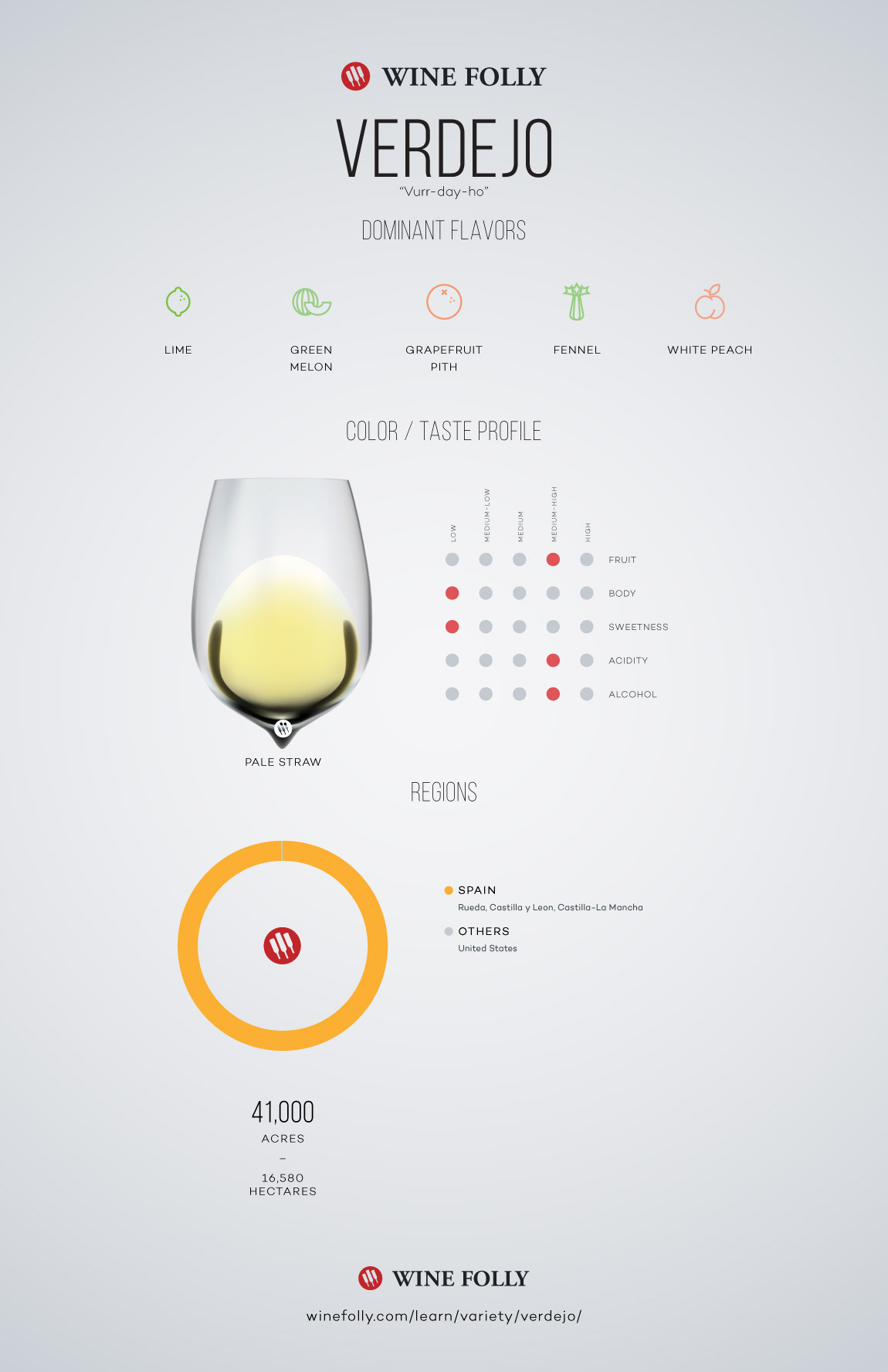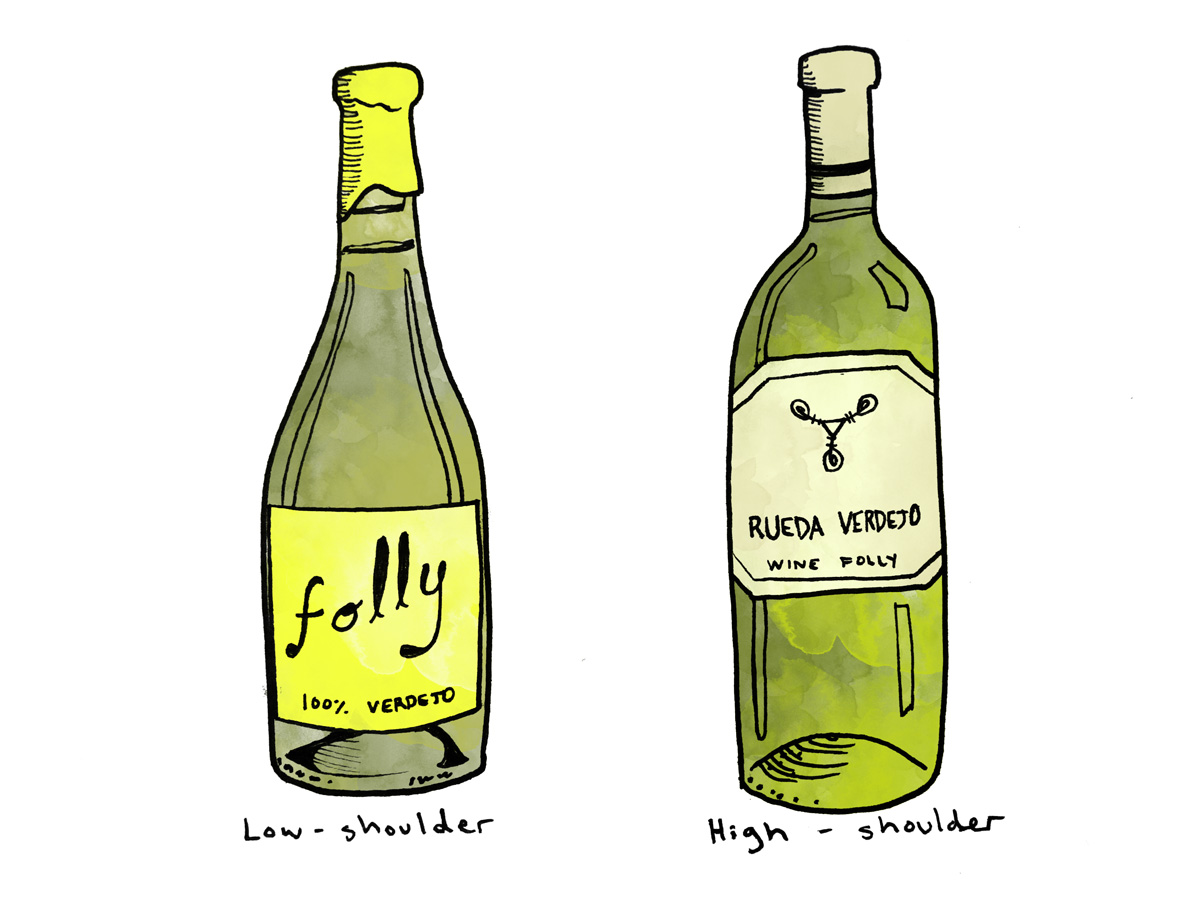Verdejo (“Vurr-day-ho”) is an uncommon, light-bodied white wine that grows almost exclusively in Spain. The wine is an outstanding alternative to wines like Sauvignon Blanc and Pinot Grigio, with surprising changes in flavors coming with age. Find out more about Verdejo, where it grows, what it tastes like, and excellent food pairings.
Verdejo is not most people’s first wine, nor is it their second wine. It’s not a wine that your friends discover on international travels, because nobody goes to Rueda, Spain. So, if you’ve tasted Verdejo already, you’re part of a very small group of enthusiasts!
Tasting Verdejo
Verdejo makes subtle-yet-stunning white wines with flavors of lime, Meyer lemon, grapefruit, grass, fennel, and citrus blossom. It’s often likened to Sauvignon Blanc but really, it deserves its own category. Unlike most whites, Verdejo continues to improve over several years of bottle-aging, where it gains a rich texture and flavors of toasted Marcona almonds, supported by sparkly acidity. The bitter flavors of grass and fennel come in on the finish and almost make the wine taste crunchy.

Verdejo behaves like a lime on a plate of fish tacos. photo by Jeffrey W
Food Pairing with Verdejo
One of the best ways to drink Verdejo is alongside food. The wine’s higher acidity and subtle bitterness make it work very well as a palate cleanser. Things to keep in mind when creating pairings is to use Verdejo’s lime and citrusy flavors to offset a dish. As a general rule, if you would put lime in the meal, it will probably pair well with Verdejo! That said, a Verdejo wine that has noticeable oak-aging will work better with dishes that have more cream or with coconut-based sauces. Happy pairing!
Examples
- Meat
- Lime Chicken, Chicken in Almond Sauce (pollo en pepitoria), Carnitas, Fish Tacos, Sole, Pork Loin, Seitan, and Tofu
- Cheese
- Sheep’s Milk Cheeses: Manchego, Queso Zamorano, Pecorino, Feta, Ossau-Iraty, Halloumi, Petit Basque, and Ricotta
- Herb/Spice
- Lime, Tarragon, Cilantro, Basil, Parsley, Garlic, Ginger, Galangal, Sichaun Pepper, Red Pepper Flake, Cayenne Pepper, Cumin, Coriander, Tamarind, Pine Nuts
- Vegetable
- Potato, Artichoke, Leek, Shallot, Bell Pepper, Asparagus, Avocado, Arugula, Pineapple, Coconut, Mango, and Green Onion
Styles of Verdejo
When you dig into finding a Verdejo wine, you’ll find that there are a few different styles available.
Lean and Minerally: This style continues to increase in popularity and champions Verdejo’s lime and grassy flavors. This would be the style that is a great alternative to Sauvignon Blanc. Producers who champion this style usually bottle their wines in high-shoulder bottles (aka Bordeaux bottles).
Medium-Weight and Smoky: A style achieved with the use of oak fermentation, oak aging, or other oxidative winemaking techniques gives the wines of this type more richness and a somewhat creamy texture on the palate, as well as subtle notes of toasted almonds and lemon curd. Producers who champion this style often opt to give the wine a made-up name (such as Bodegas Naia “Naiades”) and use a low-shoulder bottle.

Pre-phylloxera Verdejo old vines in Ossian Vineyards
Verdejo from Rueda
The Rueda region is home to the largest number of plantings of Verdejo grapes in the entire world. There are many places in Rueda with deep, sandy soils that are naturally phylloxera resistant. Some of these sandy vineyards have century’s old vineyards which produce some of the most expressive Verdejo wines.

